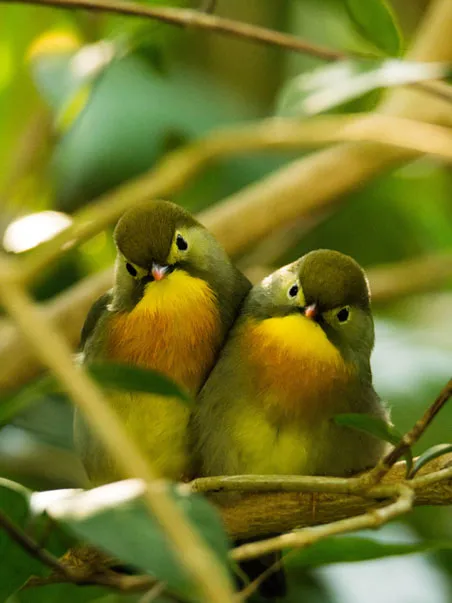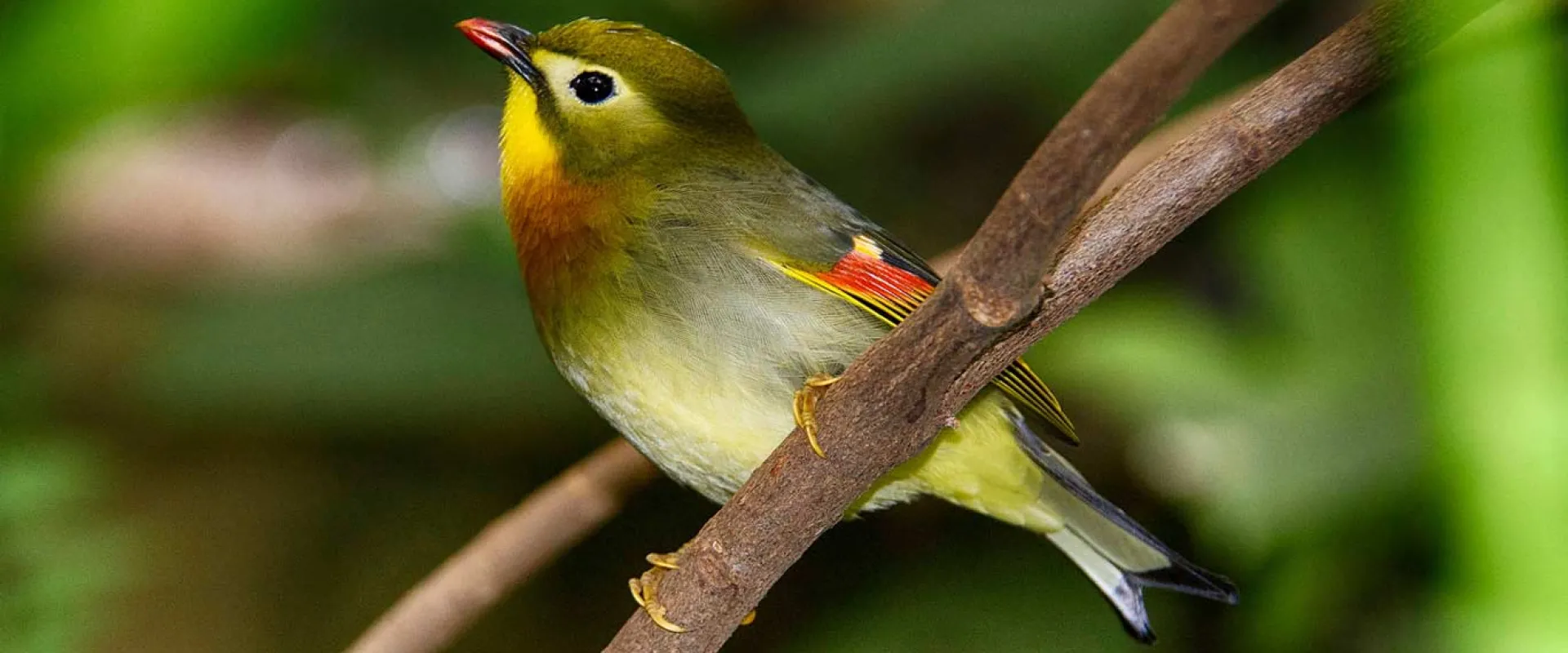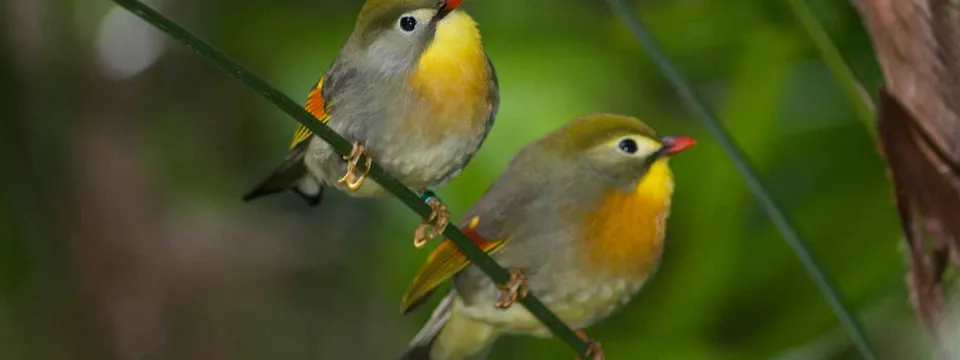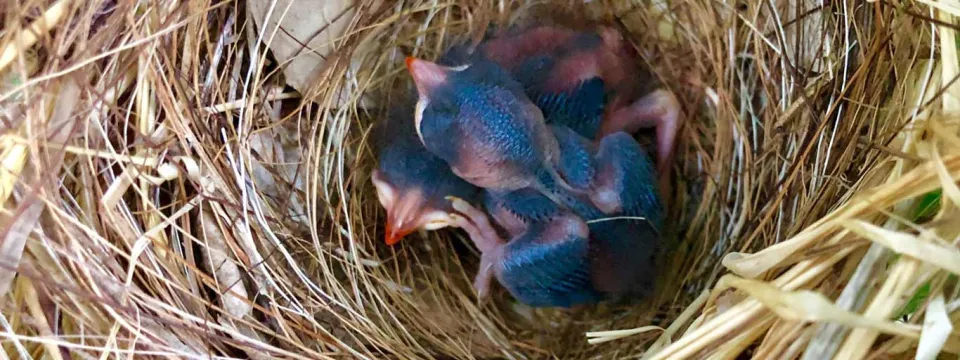Written by Debbie Zombeck, Curator of Birds, North Carolina Zoo
The Pekin Robin (aka Red-billed Leiothrix) is a small colorful songbird that has been welcoming Zoo guests to the RJ Reynold’s Forest Aviary since it first opened to the public in 1982. Adult birds are about six inches in length and have bright red bills and a dull yellow ring around their eyes. Their backs are dull, olive green, and they have a bright yellow-orange throat. They can easily be seen and heard as they forage among the lush tropical plants along the Aviary pathways, calling to each other to stay in contact. They do extremely well in aviaries as they get along with many different species of birds and will get quite close to zoo guests due to their natural curiosity. If you arrive at the Aviary in time for the 9:30 a.m. feeding, you are sure to see them land on the food cart to snatch a mealworm.
There are currently four male Pekin Robins in the Aviary (all of them hatched at the North Carolina Zoo) and three pairs set up for breeding at our Avian Propagation Center. During the winter months, the breeding pairs will be moved to the Aviary as this species will form flocks of 10-30 birds during the non-breeding season.
Pictured Above: Adult Pekin robin
Pekin Robins can reproduce as early as one year old. The avian care staff sets up each breeding flight with dense plant cover so that the pair can choose a nest site where they feel safe and secure. The birds are provided with a wide variety of nest materials (pam, banana, and/or coconut fibers, raffia) for building their nest.
Both males and females will build the open cup nest, and once complete, the female will lay 3-4 eggs. The incubation of the eggs lasts 11-14 days. Both parents will feed the growing youngsters insects such as mealworms and crickets. The chicks will fledge the nest at 10-14 days, but the parents will continue to feed them for quite some time. Both parents continue to feed the chicks until they start eating on their own, usually at 4-4 ½ weeks of age.
Pictured Above: 5-day-old Pekin robin chicks
I took over the role of SSP (Species Survival Plan) Coordinator and studbook keeper for the Pekin Robin in 2014. North Carolina Zoo avian care staff have worked cooperatively with other zoos across the country for many years to establish a viable, sustainable population of Pekin Robins. Currently, there are 75 birds at 20 zoological parks in North America. As the program coordinator, I oversee population management for this species to maximize genetic diversity to ensure the long-term sustainability of this population in the accredited zoo community. As the studbook keeper, I enter data on births, deaths, and transfers between zoological parks once per year.
This information is then analyzed by a computer program for managing large populations of animals, and a breeding and transfer plan is produced for the species.
Given that Pekin Robins can successfully breed as early as one year of age and can produce anywhere from one to three clutches of chicks per year, it is necessary to update the breeding and transfer plan yearly. The main reason for the annual breeding and transfer plan is to find a home for the previous year’s offspring and to set up new breeding pairs or single-sex flocks. Sometimes offspring will stay at the zoo where they hatched, and a mate will be transferred in. Or, if the individual has genes that are overrepresented in the population, this bird may become part of a single-sex flock in a large aviary for a period of time and then be brought back into the breeding population at a later date.
In the wild, the Pekin Robin inhabits forested areas in Southeast Asia. The Pekin Robin is not endangered, but their wild populations are decreasing in their native range due to ongoing habitat loss and capture for the pet trade in Asia.

The Zoo's Pekin Robins have been a guest favorite for many years. Although small, their brilliant green and yellow coloring along with their bright red bills, make them easy to spot in the Aviary.




